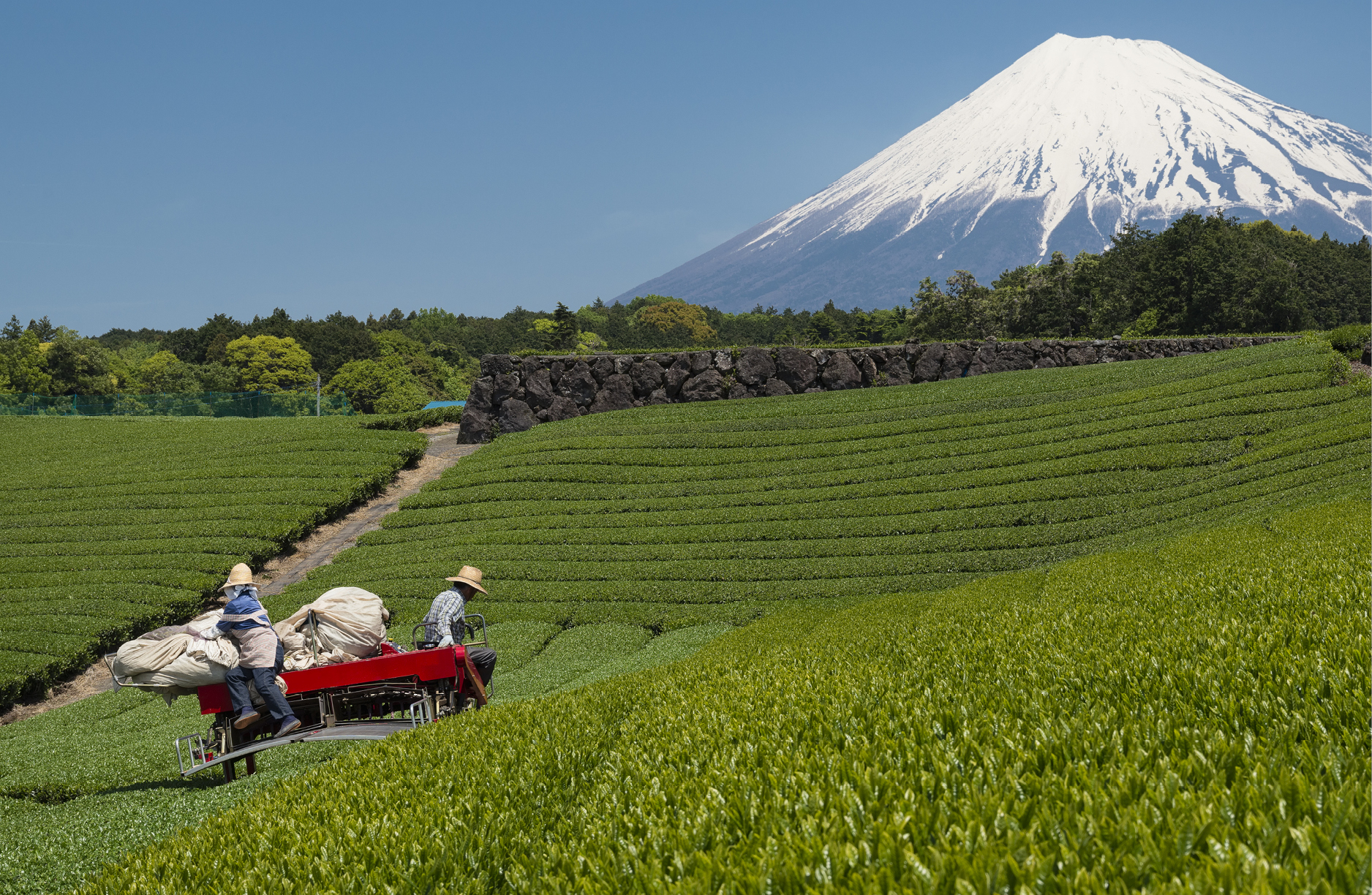日本の農村
Rural Japan
A slower way of life
Visit the Japanese countryside and you’ll soon understand that things look and work differently: the colorful strings of orange persimmons you see hanging outside homes to dry, the occasional scent of a bonfire, the clusters of watery rice paddies between homesteads, and the way darkness blankets everything at night, with the sky up above speckled with vivid stars. Life here moves at a much slower pace than in urban Japan, dictated by the changing seasons and the planting of crops.

D Left to right: Shirakawago is famed for its unique thatched houses; persimmons are a common sight in the countryside in autumn.
stunning Vistas
Because Japan is so mountainous, only about 12 percent of the country is farmland—an insignificant figure compared to other major economies. With relatively little space for farming, Japan grows less than half its own food. Travel through Hokkaido and you’ll see rolling fields and expansive flat lands, but in many other parts of rural Japan farmland takes a different form in line with the natural terrain, such as the main tea production areas of Shizuoka and Kyoto, where green tea bushes grow in photogenic rows on tiered, hillside plantations—they’re tricky to reach without a car, but worth the effort for the wonderful views.
It’s in the village of Shirakawago in Gifu Prefecture—at the foot of holy Mount Haku—that Japan’s countryside arguably looks its most idyllic. The steeply thatched gasshozukuri farmhouses here, enveloped by the green of rice paddies in summer and frosted with snow in winter, take their name from the way they resemble hands clasped in prayer.

D Tea fields follow the contours of the country’s hilly terrain.
Off the Tourist Trail
Less-trodden alternatives include the Tono Valley in Iwate Prefecture, which feels almost frozen in time. Rice paddies and small farms dot the valley floor, and local folklore adds a touch of mystique, with stories like that of the kappa, a pond dweller with a taste for cucumbers and a sinister fondness for drowning people. The Iya Valley in Tokushima Prefecture is even more idyllic, its river gorges and wooded mountainsides home to thatched houses, vine bridges, and natural hot springs.
Be More Japan rural japan
get involved
You don’t have to visit rural Japan as a sightseer—you could also go on a working farm vacation to really go deep into Japan. An organization called World Wide Opportunities on Organic Farms (WWOOF) has hundreds of farm-stay hosts all over Japan who can give short- and mid-term work experiences to travelers.
